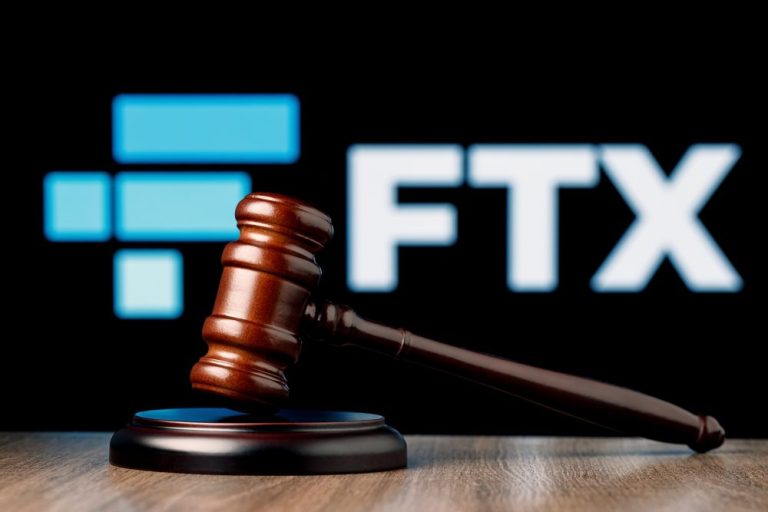
A he-said-they-said war of words has been swirling around FTX’s solvency since its bankruptcy.
The Securities and Exchange Commission (SEC) estimated that the crypto exchange’s customers have lost more than $8 billion as a result of alleged fraud.
FTX lawyer Andrew Dietderich said the amount of the shortfall in FTX customer funds isn’t yet clear, and the company’s newly installed restructuring leadership is working on determining the size of the claims pool and potential recoveries for the around 9 million customer accounts it has identified.
Sam Bankman-Fried, the criminally-charged and disgraced founder of the FTX crypto enterprise, has repeatedly claimed in blog posts penned from under house arrest at his childhood home that FTX was rushed into an ill-advised bankruptcy by its fee-chasing lawyers, and that the company is balance sheet solvent.
“Even now, I believe that if FTX International were to reboot, there would be a real possibility of customers being made substantially whole,” Bankman-Fried stated.
An investigation by the FTX Debtors has confirmed shortfalls at both the exchange’s international and U.S. platforms.
“We are making important progress in our efforts to maximize recoveries, and it has taken a Herculean investigative effort from our team to uncover this preliminary information,” said John J. Ray III, the CEO and chief restructuring officer of the FTX Debtors in a statement.
As reported by PYMNTs, the bankrupt company’s lengthy list of creditors includes investment firms, tech companies like Netflix and Apple, banks, media outlets, state governments, the finance ministries of Vietnam, India and Japan, and other crypto firms.
As crypto assets start off 2023 in the green after a brutal past year, observers are beginning to wonder whether the market rally may turn the tide for FTX’s digital asset-heavy balance sheet, and at which point the collapsed exchange may be viewed as secretly solvent — if still illiquid.
FTX was one of the most valuable tech sector unicorns of 2022, with a $32 billion valuation.
The exchange itself worked well as a business before its operations were derailed by the alleged criminal acts of its management team. Per financials included in the FTX Debtors’ court filings, the FTX enterprise generated $963 million in revenue for fiscal year 2022, with a net income of $313 million.
The relative strength of the exchange’s fee-driven trading income stream is part of the reason the FTX Debtors are mulling over the possibility of re-opening the exchange for business.
According to the flings, this would give the exchange a bear market valuation of around $8.3 billion.
FTX by the Numbers
A presentation titled “Maximizing FTX Recoveries,” attached as an exhibit within the Kroll court filings, summarizes what the Debtors’ Advisors see as the FTX group’s current situation and outlines potential next steps for making customers whole again by marshaling assets, avoidance actions and litigation.
A total of $5.5 billion in liquid cash and assets has been found so far, composed of $1.7 billion of debtor and non-debtor cash, $3.5 billion of cryptocurrency and FTT tokens, and $300 million of liquid securities.
This $5.5 billion in liquid assets stands against an unofficial estimate of over $8 billion in liabilities, leaving a shortfall of, at a minimum, $2.5 billion.
The full list of potential sources of recovery outlined by the Debtors’ Advisors include cash, crypto assets, securities, venture investments, equity investments, debt investments, subsidiary businesses, primary exchanges, real estate, exchange avoidance actions, other avoidance actions, and causes of action.
As stated in the recovery document, the FTX Debtors are exploring the potential monetization of FTX’s over 300 prepetition venture, equity, and debt investments with book value of approximately $4.6 billion.
This illiquid figure was not included in the $5.5 billion liquid number, and its inclusion implies that at least in one sense, given the $8 billion liability estimate, that FTX may be balance sheet solvent.
The prepetition valuations are based on numbers as of FTX’s bankruptcy filing Nov. 11. In the months since, the company’s crypto holdings have substantially increased in value, as have certain investments in its venture portfolio.
For example, FTX invested $500 million into artificial intelligence (AI) startup Anthropic as part of its Series B at a valuation of $2.5 billion. Per a report by The New York Times, Anthropic is close to raising a new $300 million funding round at a roughly $5 billion valuation, raising the value of FTX’s stake to around $1 billion.
However, this is just a single, cherry-picked example, and other of FTX’s investments may not be performing as well.
Other positives, at least for the long list of FTX creditors, include billions of dollars in disbursements made by the company that may be subject to avoidance actions if it is determined that they were made using customer funds, which would qualify them as “fraudulent conveyances” subject to clawback as part of FTX’s restructuring.
This is the approach being taken with a $446 million loan repayment FTX made to Voyager Digital before its collapse. Other potential clawbacks, per the Debtors’ Advisors, include a $2.6 billion loan made to Genesis, insider loans to company executives of more than $2 billion, the company’s $2.1 billion share repurchase from rival exchange Binance, its $400 million investment in Module Capital, $93 million in political donations, and $253 million in real estate.
This represents around $7.4 billion.
A tidy sum, although complicating matters somewhat is the fact that both Genesis and Voyager Digital are now themselves bankrupt.
It remains to be seen how the situation plays out in court, but it may not be as dire as originally predicted for the company’s many creditors.
Although given the illiquid nature of many assets and the manner in which their valuations are tied to external and unpredictable market forces, it’s impossible to say what the future holds.
For all PYMNTS crypto coverage, subscribe to the daily Crypto Newsletter.